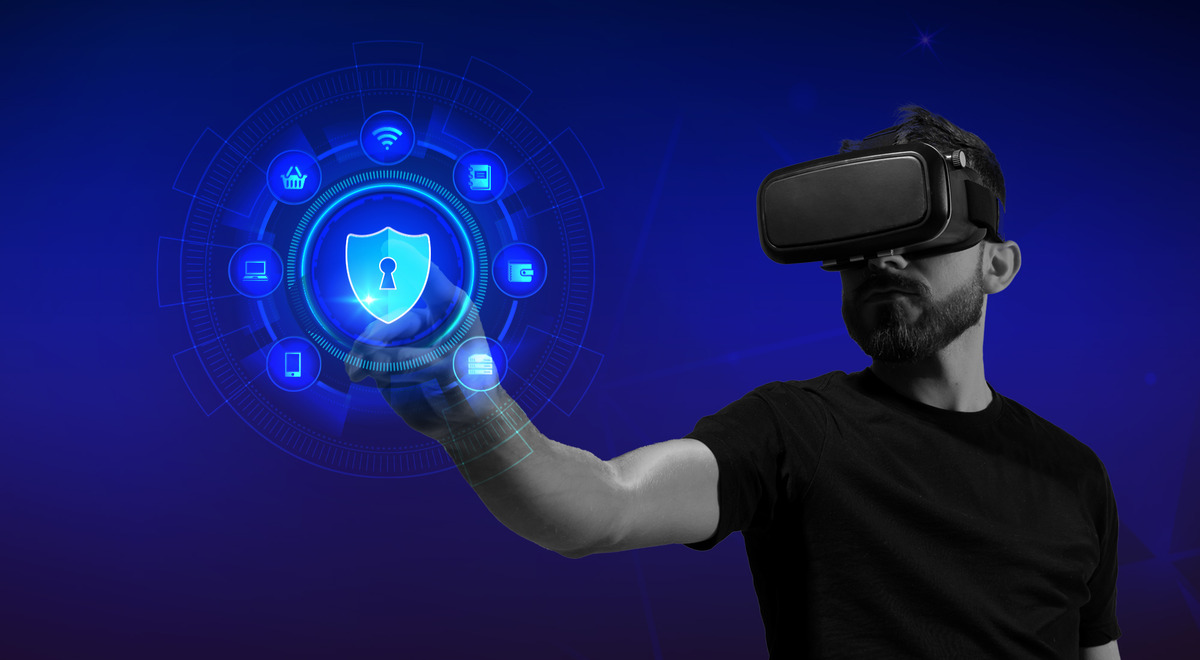The metaverse presents a bright digital future where people can work, communicate, and explore as lifelike avatars. However, beneath the glamorous exterior lurks a hidden threat: privacy threats that jeopardize users’ safety. The risks of identity theft, surveillance, and data breaches are increasing as virtual worlds become more prevalent. Our digital identities are represented by avatars, which are vulnerable to hacking, deepfakes, and illicit tracking. As online companies collect vast amounts of personal data, the line between virtual and real-world privacy is becoming increasingly blurred. This article explores the hidden dangers in the metaverse and examines ways users can stay safe in an increasingly connected digital world.
The Metaverse’s Illusion of Anonymity:
Because avatars can hide their true identities from prying eyes, many users believe they offer complete anonymity. However, this is not the case. Through biometric tracking and advanced data analytics, real identities can be linked to virtual behavior. To create a comprehensive user profile, companies often collect behavioral data such as voice, movement patterns, and interaction habits. Virtual shopping and chatting are two seemingly innocent activities that can expose users’ vulnerabilities and personal preferences. The false sense of security that comes with anonymity leaves users unaware of the extent to which they are being monitored.
Issues with Data Collection and Surveillance:
The metaverse uses a vast amount of user data, making it a treasure trove for companies and hackers. Every interaction is recorded and analyzed using tools such as eye-tracking and emotion-detection software. While privacy advocates warn against excessive intervention, tech companies believe that data collection can improve the user experience. In the absence of strict regulations, hackers can misuse personal information or sell it to advertisers. Worse yet, governments can use Metaverse surveillance to conduct widespread surveillance, which poses ethical and legal dilemmas. Because the data collection method is not transparent, users do not know who has accessed their information and why.
Identity Theft and Avatar Theft:
Avatars are not just digital symbols; they also have monetary and personal value. Cybercriminals are creating increasingly sophisticated ways to impersonate others, steal virtual assets, and control avatars. Hackers can use deepfake technology to imitate voices and facial expressions, making it harder to identify fraud. Once an avatar is compromised, the damage can extend beyond the virtual world and affect people’s finances and reputations in the real world. Avatar theft is on the rise, and victims are finding it difficult to restore their online identities. While many platforms currently lack adequate security mechanisms, strong authentication measures are essential.
Online Harassment and Stalking on the Rise:
The immersive nature of virtual worlds has made harassment more acute and personal. Virtual spaces allow for real-time, three-dimensional interactions that feel physically threatening, unlike the textual abuse in traditional social media. Users claim that hostile individuals have stalked, verbally harassed, and even assaulted them in virtual environments. Avatars can be tracked across multiple platforms, allowing stalkers to track their movements and collect personal information. Even with safeguards like “personal bubbles” and blocking tools, enforcement remains patchy. Without proper protection, virtual worlds can become safe havens for cybercriminals.
Legal Gaps and the Need for Regulation:
Existing privacy laws have serious weaknesses in protection because they were not designed with the complexity of the virtual world in mind. While laws like the California Consumer Privacy Act (CCPA) and the General Data Protection Regulation (GDPR) address data collection, they fall short in virtual spaces. People may wonder, who owns the data of virtual characters? Can virtual harassment be prosecuted like physical crimes? Governments and IT companies need to work together to develop clear regulations. Until then, users have to navigate an unregulated digital space where privacy violations are rampant. Lawmakers need to act quickly because the lack of a legal framework increases the danger.
How to Keep Your Privacy and Avatar Safe:
Despite the risks, users can take precautions to protect their digital identity. Using strong passwords and enabling two-factor authentication can reduce the threat of hacking. Reducing the amount of personal information provided online can reduce the likelihood of tracking. Systems that prioritize privacy and encrypt conversations can provide an additional layer of security. Additionally, insight into the metaverse’s policies can help users make more secure decisions. Even if complete protection is not possible, taking preventative measures in the ever-changing digital environment can significantly reduce risks.
Conclusion:
While the metaverse offers fascinating possibilities, there are also some negative side effects that cannot be ignored. Users face unprecedented risks due to privacy concerns, including data collection and avatar hijacking. As the virtual and real worlds merge, we urgently need stronger security and control. Without adequate protection, the metaverse could become a dystopian world of pervasive surveillance instead of a free virtual paradise. By being aware of these risks and taking precautions, users can move more safely in virtual environments. The future of virtual worlds depends on finding a balance between privacy and innovation, something that needs to be addressed urgently.
FAQs:
1. Does my avatar in the virtual world reveal my true identity?
Advanced tracking technology can link avatar activities to real-world identities using behavioral and biometric data.
2. How do hackers steal virtual avatars?
Cybercriminals use phishing, malware, and deepfakes to control avatars and obtain financial or personal information.
3. Are users of virtual worlds legally protected from harassment?
Some platforms have security features, but existing legislation is not perfect. Cybercrime legislation is constantly improving.
4. Can companies sell my profile in the virtual world for advertising purposes?
Companies can collect and sell user data without strict oversight, just as social media platforms do today.
5. How can I best protect my avatar’s privacy?
Limit the amount of personal information you share, use two-factor authentication, set a secure password, and choose a platform with a good privacy policy.




